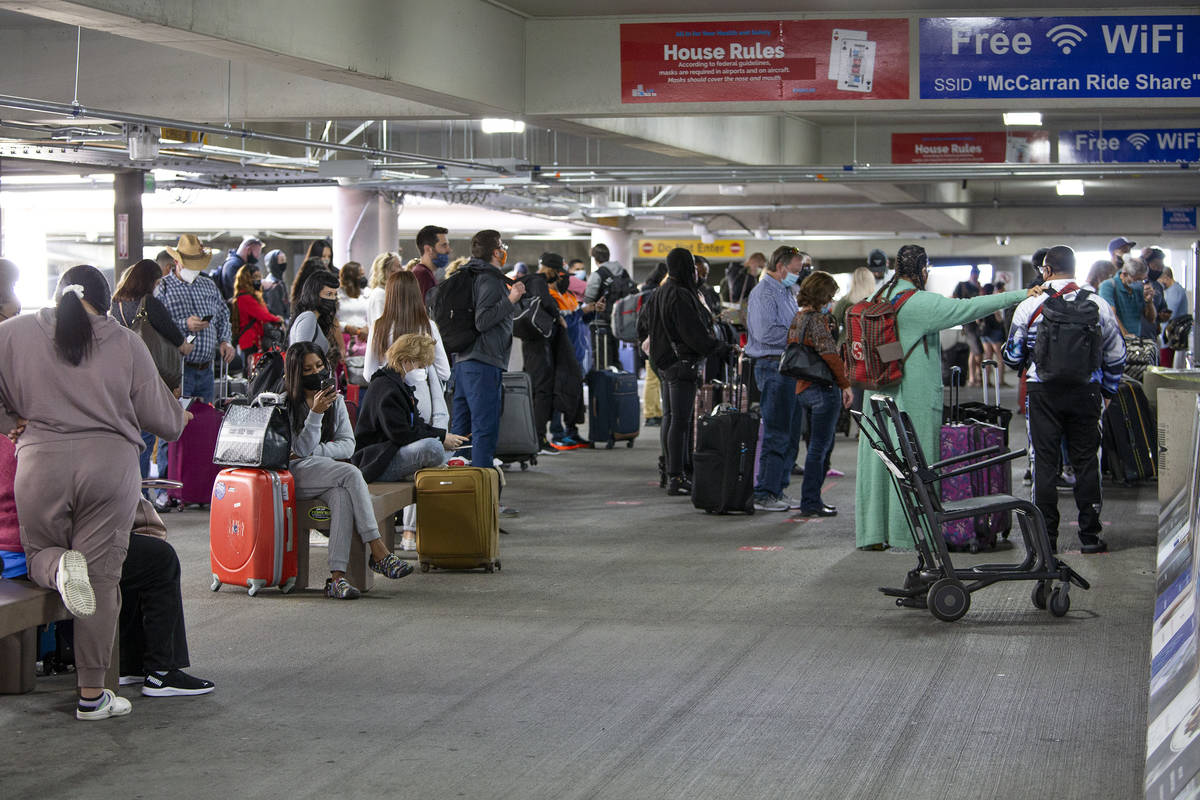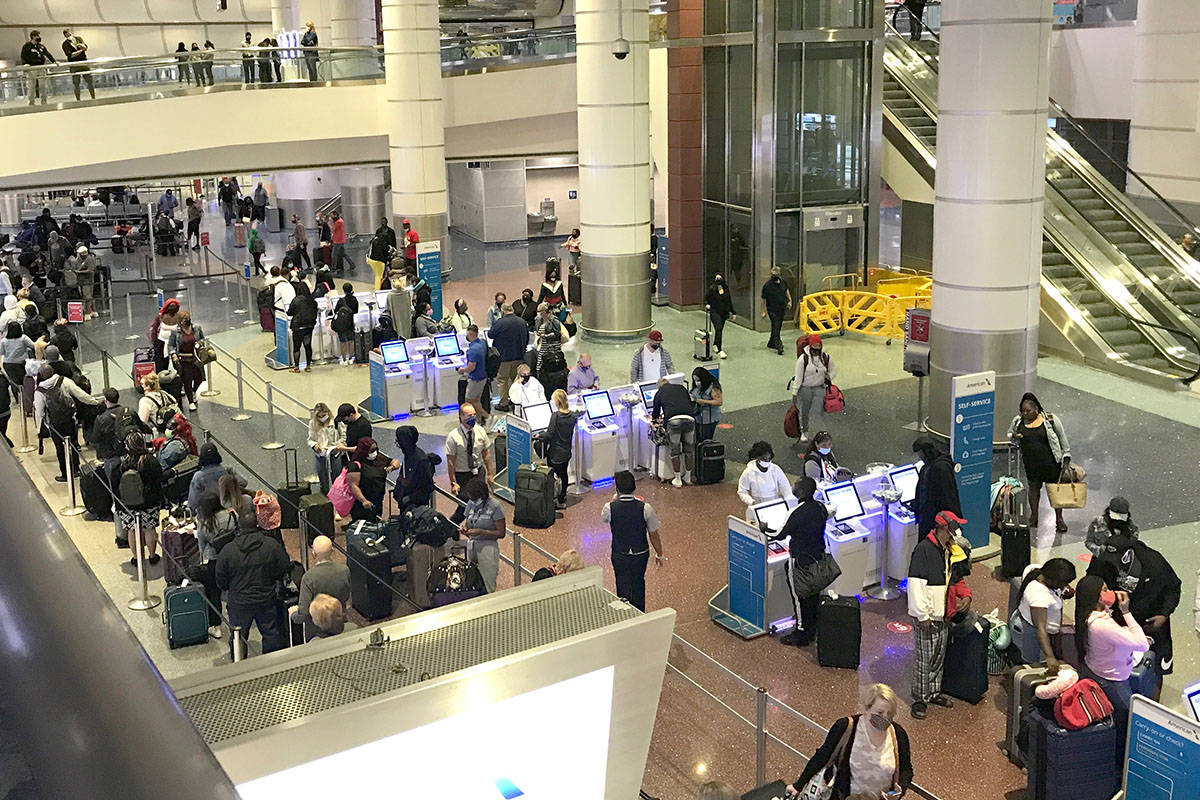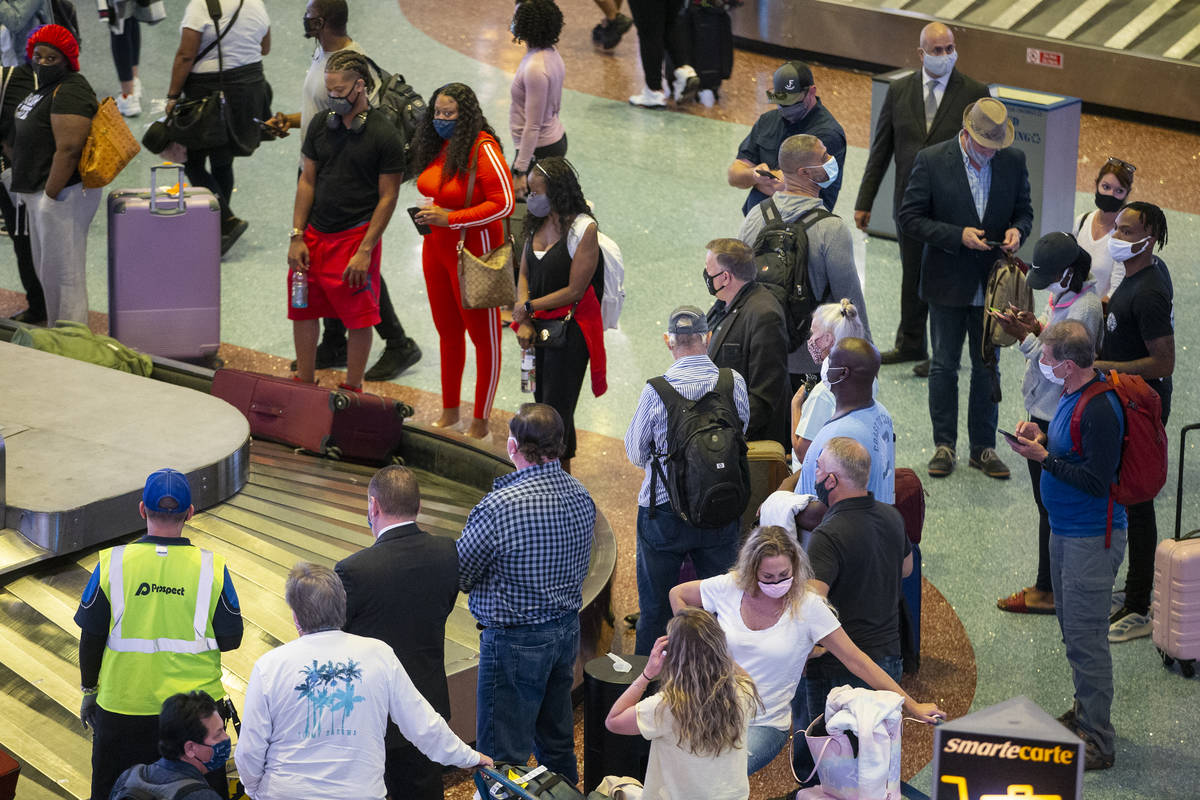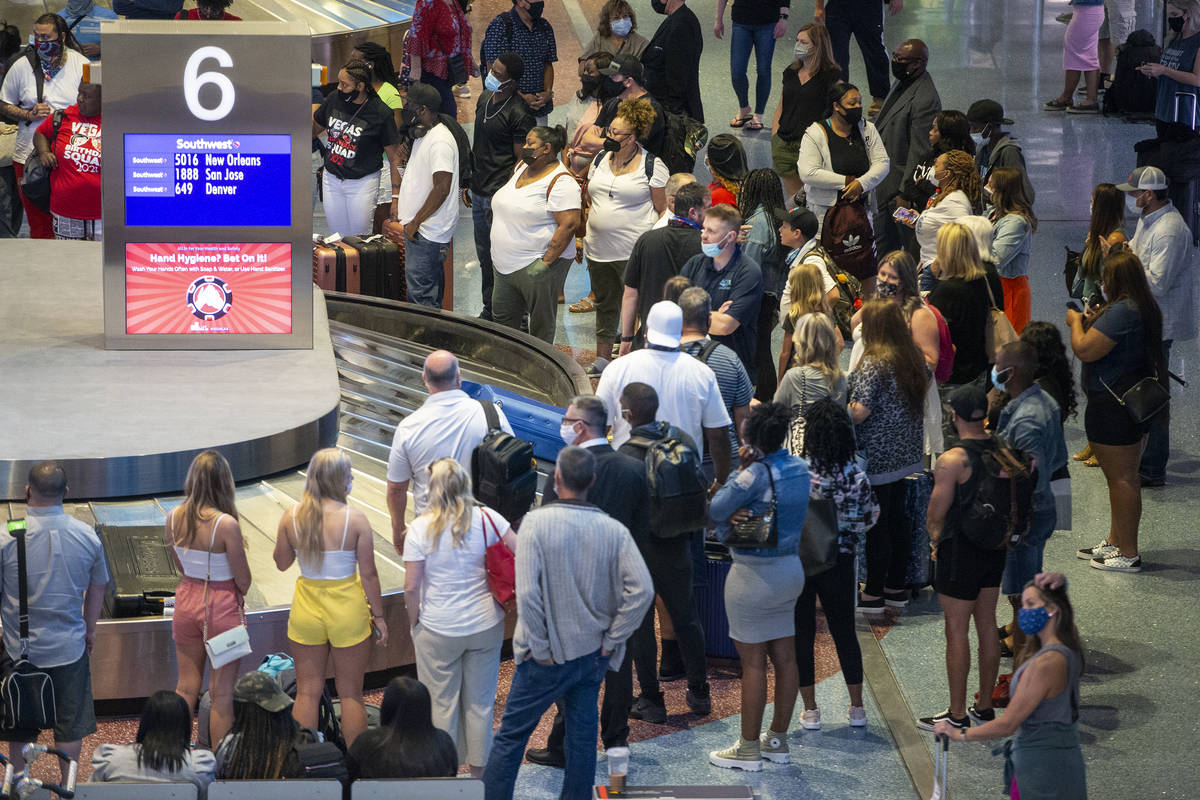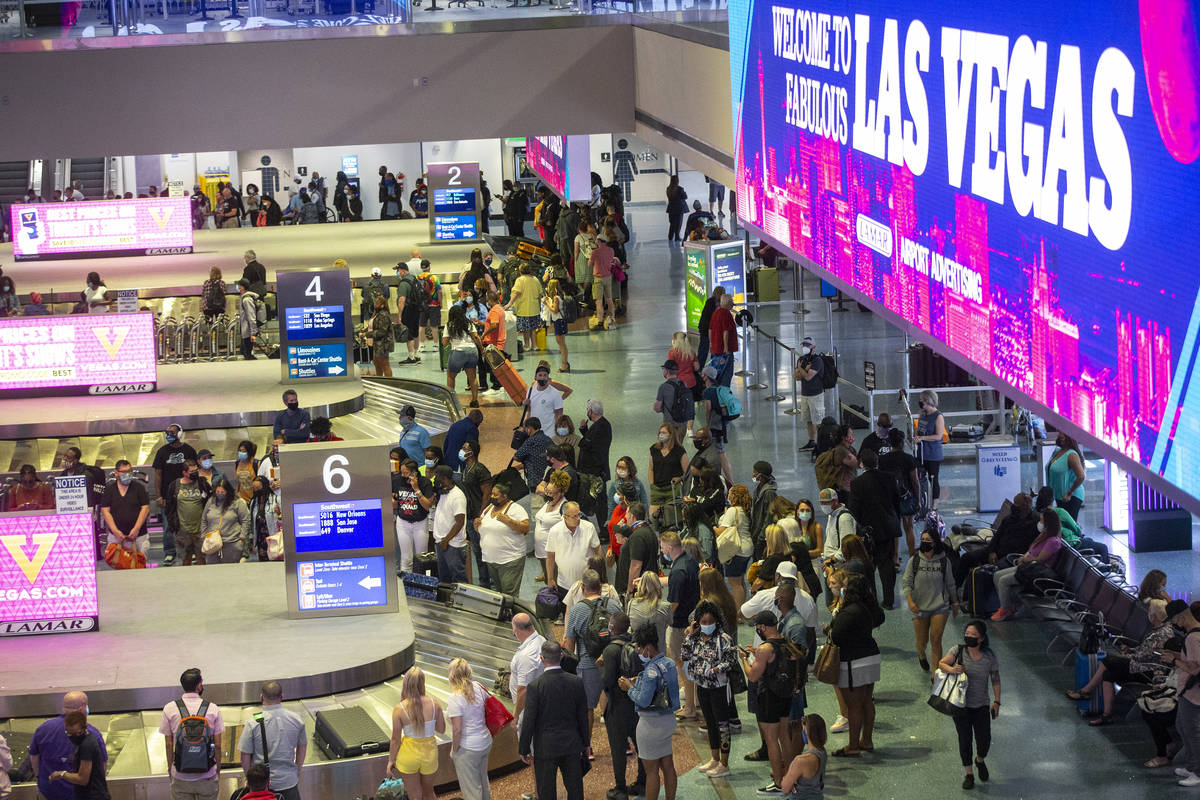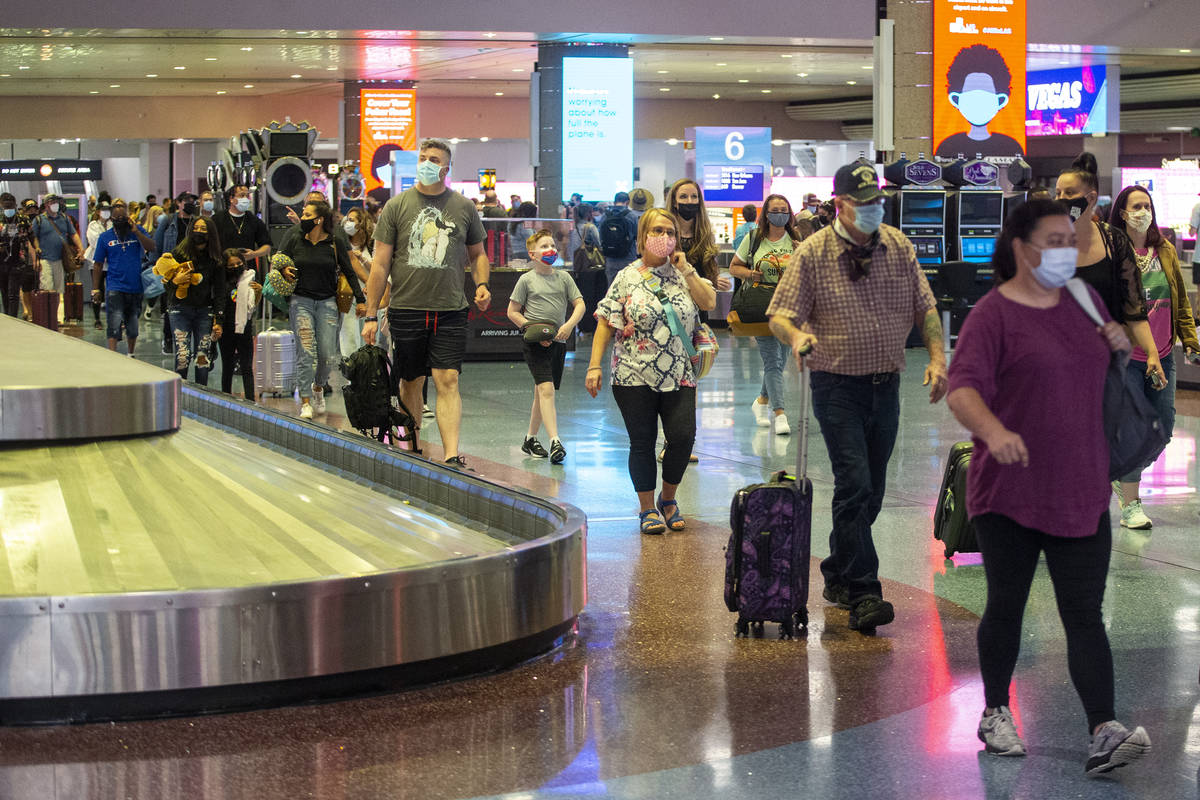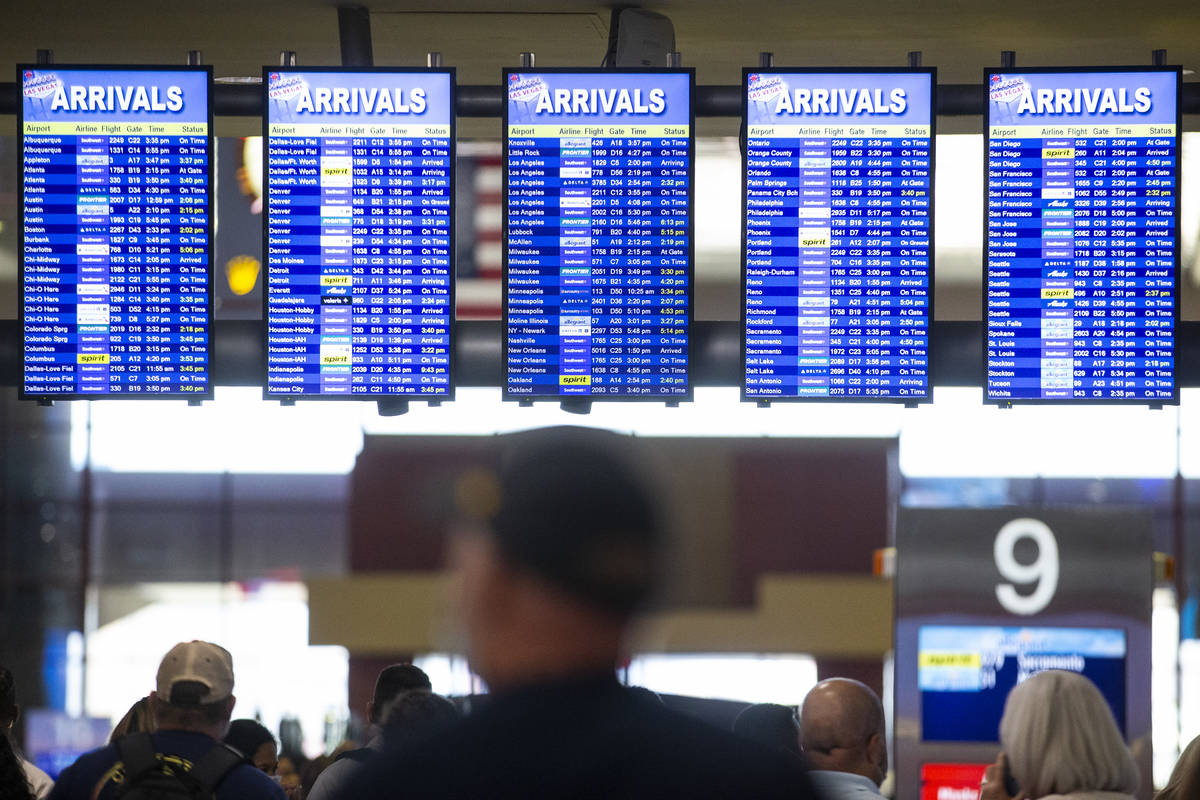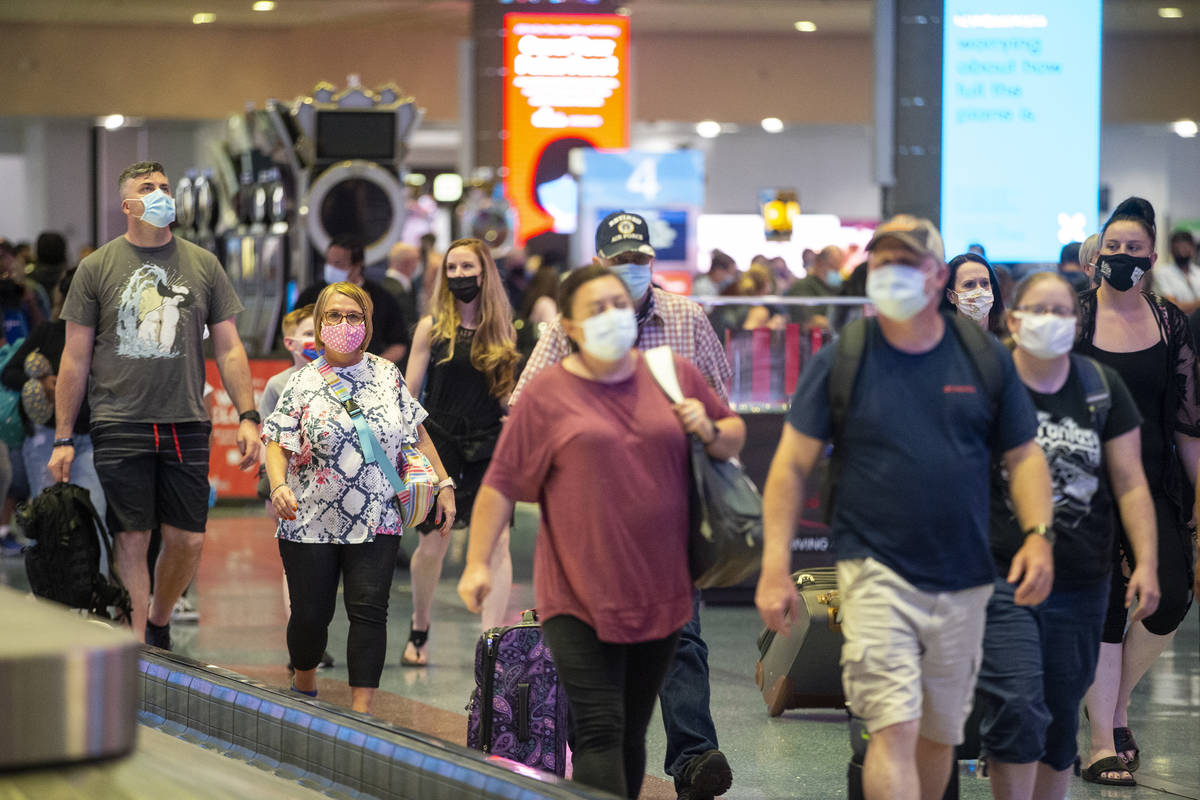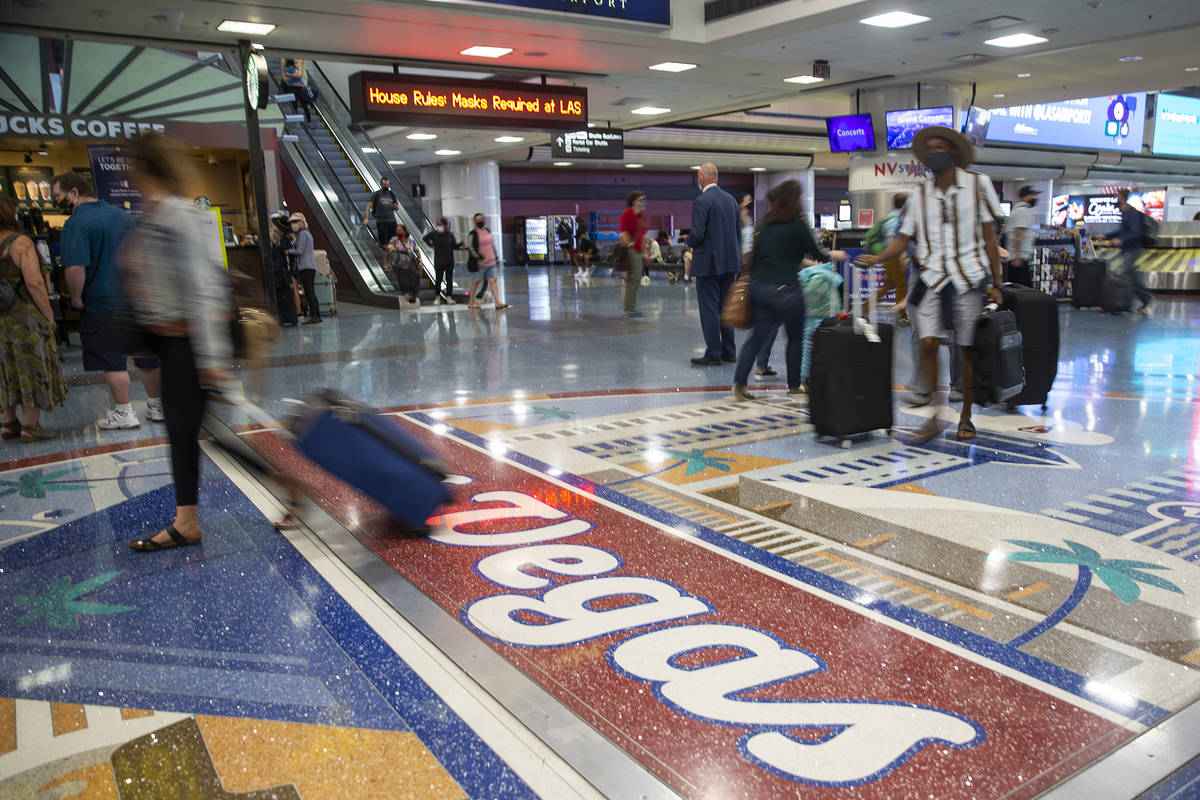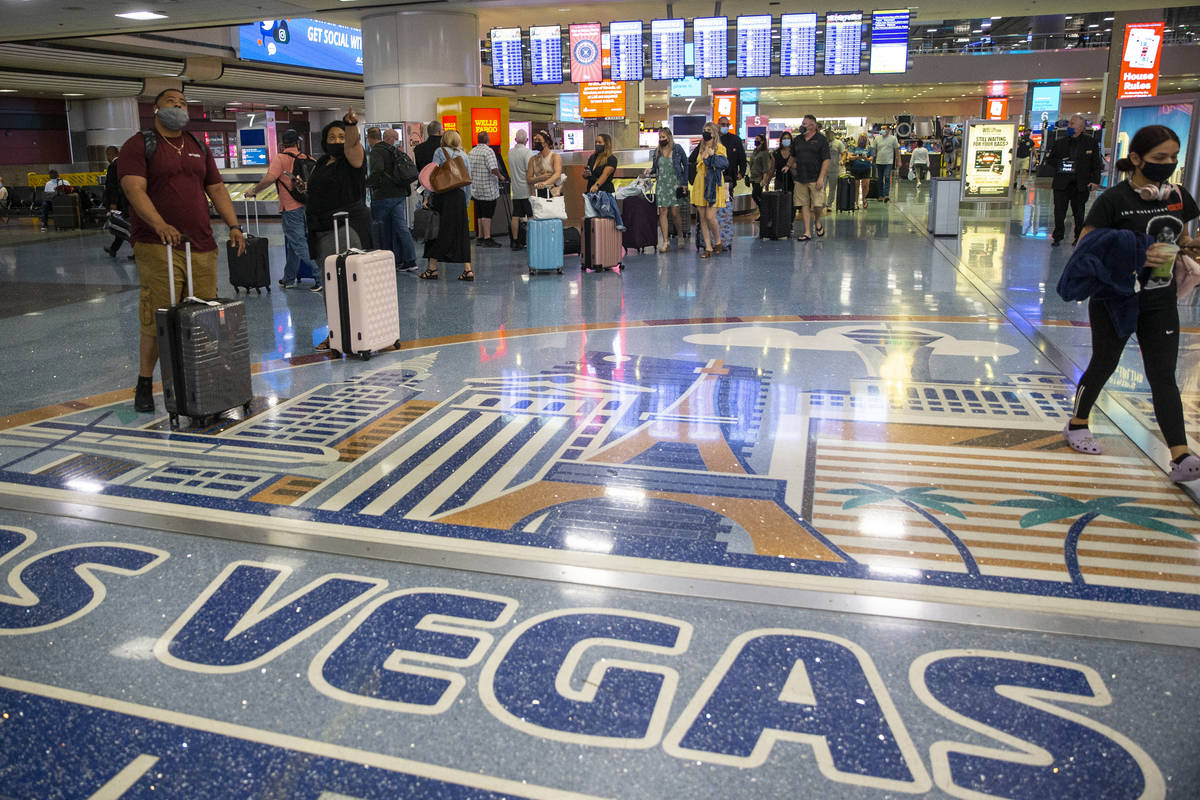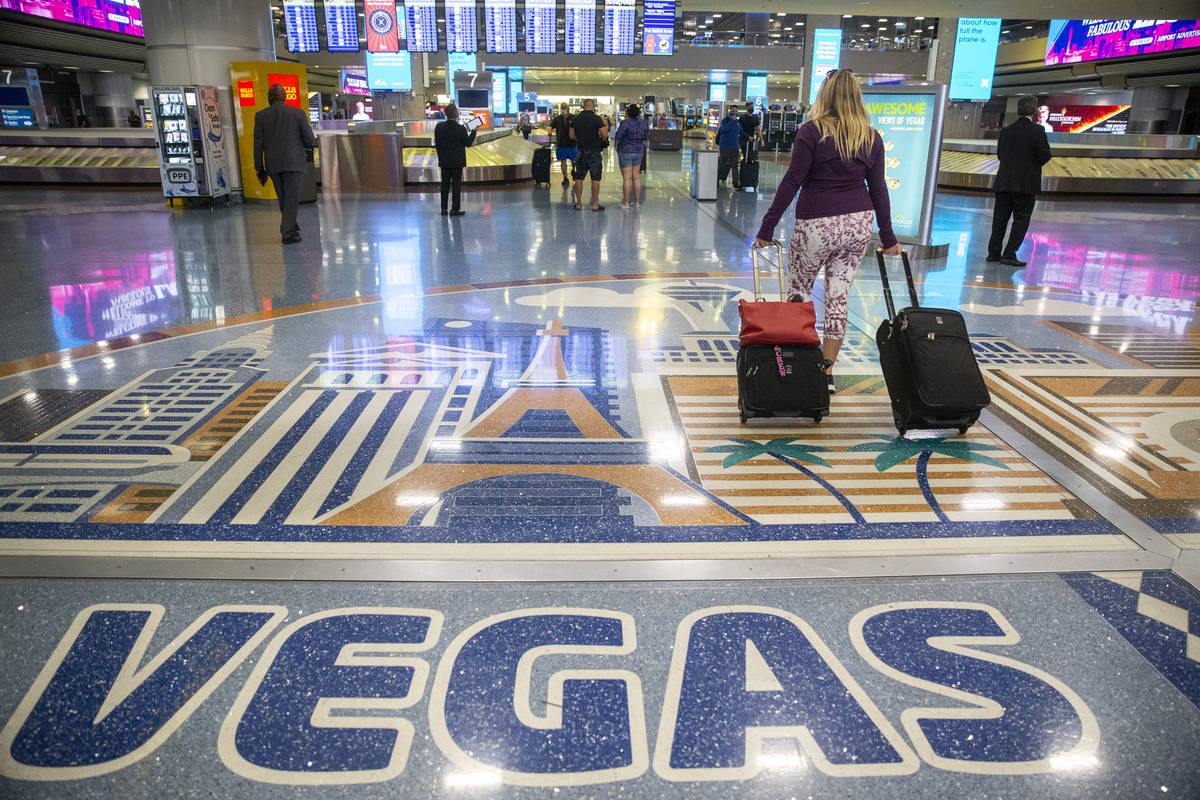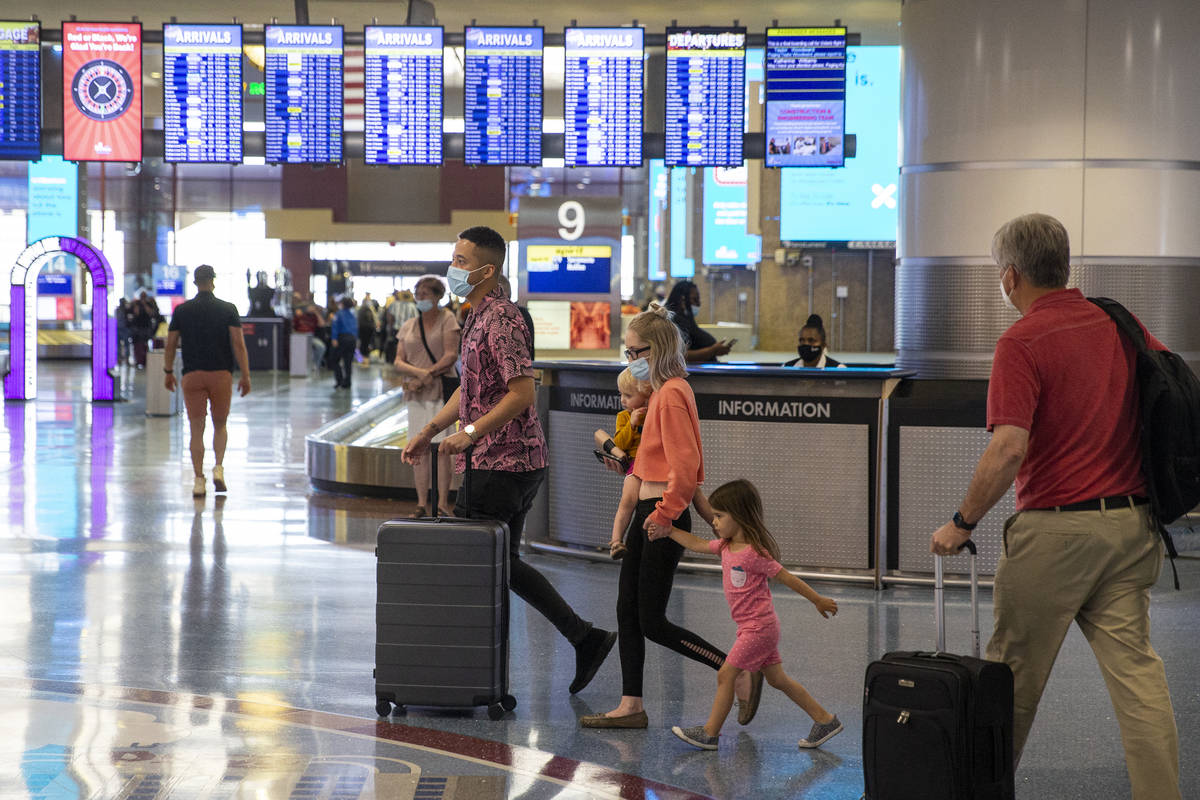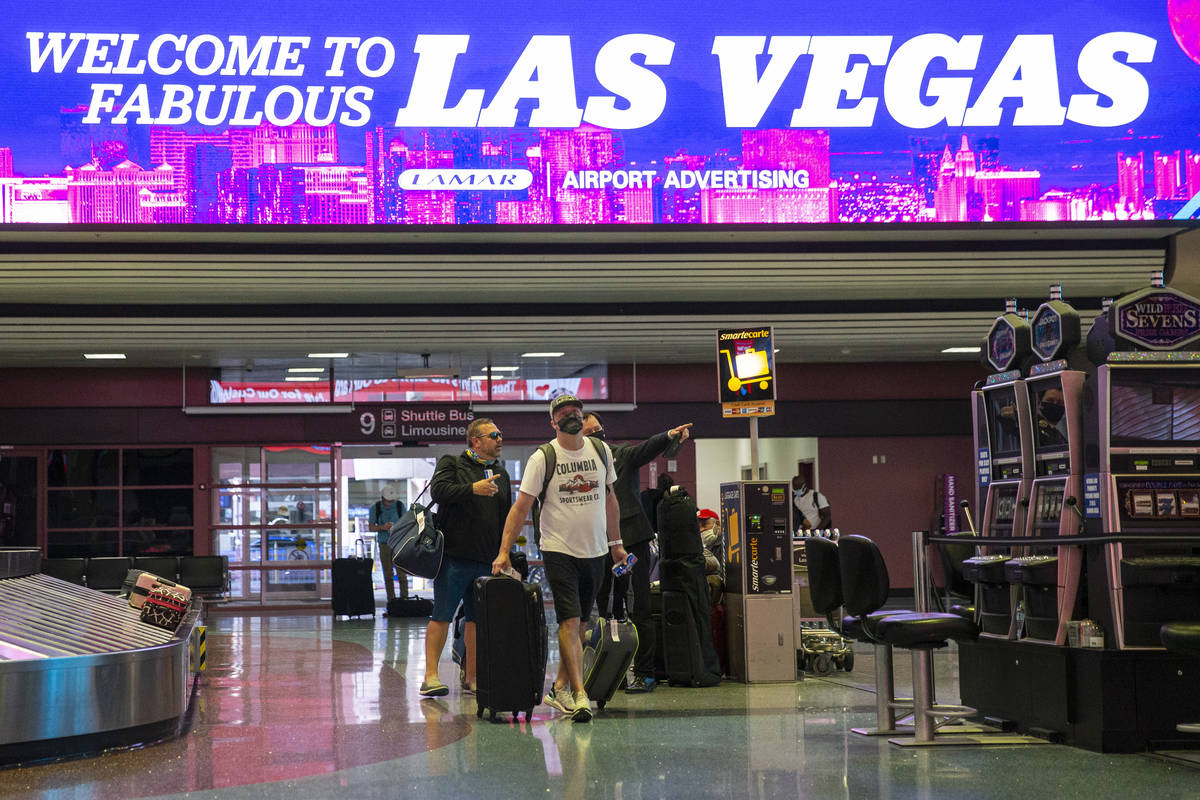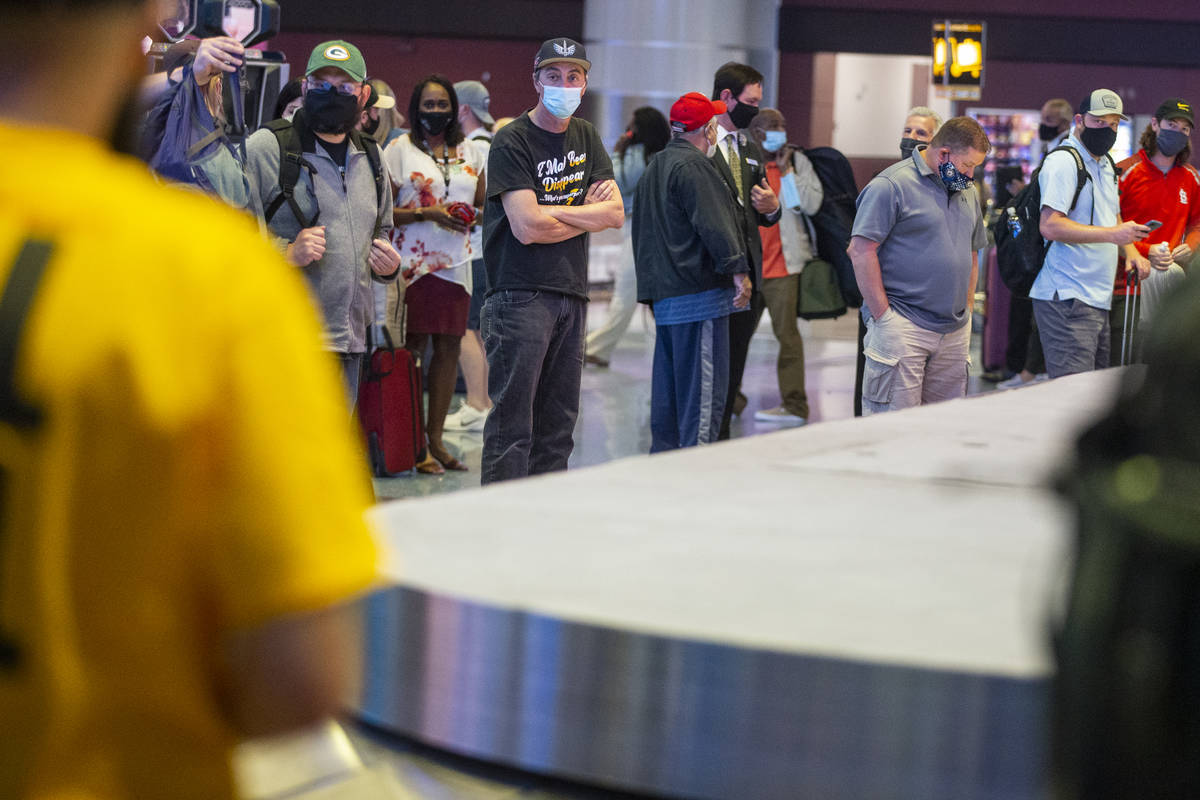Aviation consultant explains how Las Vegas plans to rebuild airline capacity
It took 11 years for airlift — the total number of seats on airplanes coming to Las Vegas — to recover after the Great Recession.
The number of seats coming into McCarran International Airport surpassed the all-time high of 79,758 seats per day in January 2020.
Everybody knows what happened just two months later.
The casino resorts closed down, McCarran became a ghost town when flights stopped coming in and people in the tourism economy began losing their jobs when COVID-19 struck and left its mark.
On Tuesday, Joel Van Over of Dallas-based Ailevon Pacific Aviation Consulting told the Las Vegas Convention and Visitors Authority board of directors how his company is working to bring back airline capacity following the effects of the coronavirus pandemic.
So far, it seems to be working better than expected.
“We knew immediately that this was not going to be good,” Van Over told the board. “We were going to lose flights, we were going to lose seats into Las Vegas. We didn’t know if we would lose airlines. Typically in downturns like this, you see consolidations or bankruptcies in the aviation sector. So we very quickly implemented a plan of how we could retain and keep service intact to Las Vegas.”
As of May, domestic seat capacity was at 65,579, 85 percent of what it was in May 2019. In June, it’s forecast to reach 91 percent.
Van Over explained that his company adopted four goals it could pitch to airlines. The goals:
■ Keep as many “dots” — destinations from Las Vegas — on the map as possible.
■ Keep as many midweek flights as possible.
■ Position Las Vegas as the gateway to the Southwest.
■ Have constant dialogues about Las Vegas with the airlines.
“You may know you have some of the best attractions outside with the Grand Canyon, Bryce and Zion,” Van Over said. “Airlines might have known that, but they think of Las Vegas as the glitz and the glam and the resorts and the pools and the clubs. We wanted to remind them that what people were seeking and how that visitation had changed was also present in Las Vegas.”
Van Over explained that he and his team were constantly appearing before airlines to remind them of the shift in expectations vacationers are expressing and that Las Vegas has the best of both worlds.
“The great thing about it is they may go to the Grand Canyon, but they’re obviously going to spend a couple of days in Las Vegas,” he said.
Another surprise Van Over discovered is that airlines, in their own survival mode, are growing their own markets, and that has turned out to be an advantage for Las Vegas.
In the past year, nine airlines added 35 markets with flights to and from Las Vegas, resulting in the addition of 4,500 seats to the market.
“We wanted to be present in every conversation with the airlines so when they were making decisions about where to put those aircraft, they were thinking about Las Vegas because the last thing they heard was that Las Vegas was doing this and Las Vegas had this going on,” he said.
Van Over scheduled meetings in Dallas with American Airlines, the world’s largest air carrier, and Southwest Airlines, the busiest commercial carrier at McCarran.
Van Over updated American executives about new resort openings, the timetable for the return of entertainment, sports and conventions. Weeks later, American upgraded 18 domestic routes to Las Vegas with Boeing 777 and 787 wide-bodied jets to expand capacity by 11,470 seats.
He pitched Southwest on introducing nonstop service between Las Vegas and Eugene, Oregon. A month later, the announcement was made, adding 31,031 new seats to the market.
But not all the news is good for Las Vegas.
While domestic lift is closing in on pre-pandemic levels, the international side is bleak.
Las Vegas in May 2019 had flights from eight countries. This month, there’s just one, with flights from Mexico.
Van Over explained that most of that downturn has been the result of restrictions from within those countries. As an example, Van Over pointed to Canada, where people can freely fly to Las Vegas whenever they want. But when they return, they face a 14-day quarantine, including four days in a hotel the passenger must pay for.
So for now, Ailevon is going to focus on domestic flight growth, knowing that international will be back.
“So we’re going to continue to push this message with all these airlines out there, we’re going to continue to make them aware that Las Vegas is open and it’s recovering, that things are rocking and rolling here,” Van Over said. “We’re going to get that message out.”
Contact Richard N. Velotta at rvelotta@reviewjournal.com or 702-477-3893. Follow @RickVelotta on Twitter.
Higher price tags
The Las Vegas Convention and Visitors Authority authorized additional payment to Universal Engineering Services covering material testing and special inspection services for The Boring Co.'s underground people-mover project on Tuesday.
The $2 million contract was expanded to $3 million as a result of a difference between staff estimates and a third party as required in the contract with Universal.
The board also voted to reconcile a contract with the Turner-Martin Harris Joint Venture, contractor for the LVCVA's new West Hall addition.
The price increase was anticipated and written into the contract.
The $8.6 million increase boosts the cost of the building to $999.2 million.



